Our Services
Tap on one of the topics below to learn more:
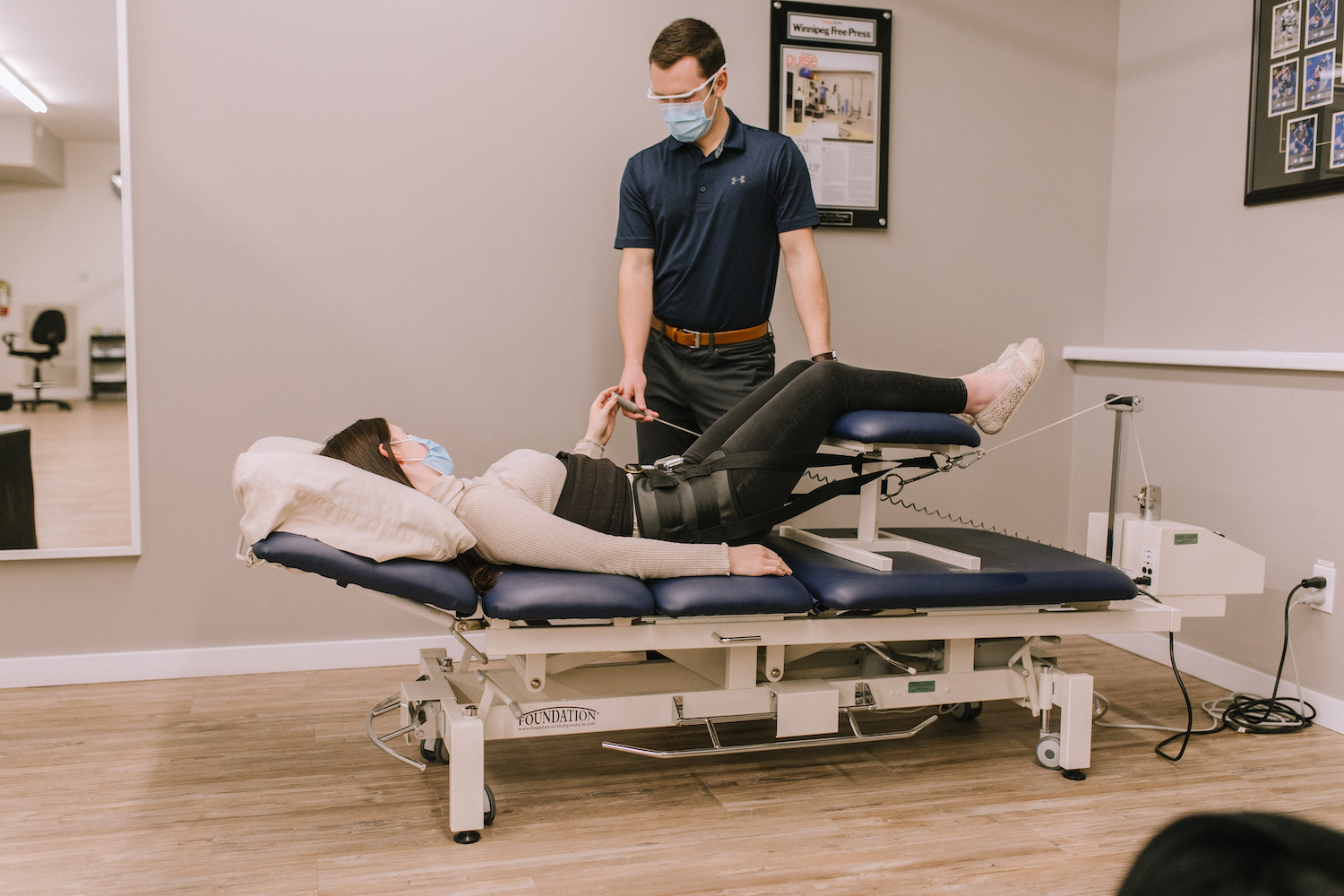
Physiotherapists are regulated healthcare professionals who play a significant role in rehabilitation, and
injury prevention. They are considered experts in how the body moves and practice evidenced based
care that promotes health and well being for people of all ages.
Physiotherapists treat both acute injuries and chronic conditions by performing detailed assessments, provide physiotherapy diagnoses,
communicate with your physician and allied healthcare professionals, as well as provide patients with various different evidenced based treatments that may include manual therapy, soft tissue massage and joint mobilizations, exercise therapy and home programming, therapeutic ultrasound, interferential
current, neuro-muscular and transcutaneus electrical nerve stimulation (NMES/TENS), acupuncture,
dry needling, taping, and most importantly thorough education and guidance on your injury and the
expected recovery process and plan of care.
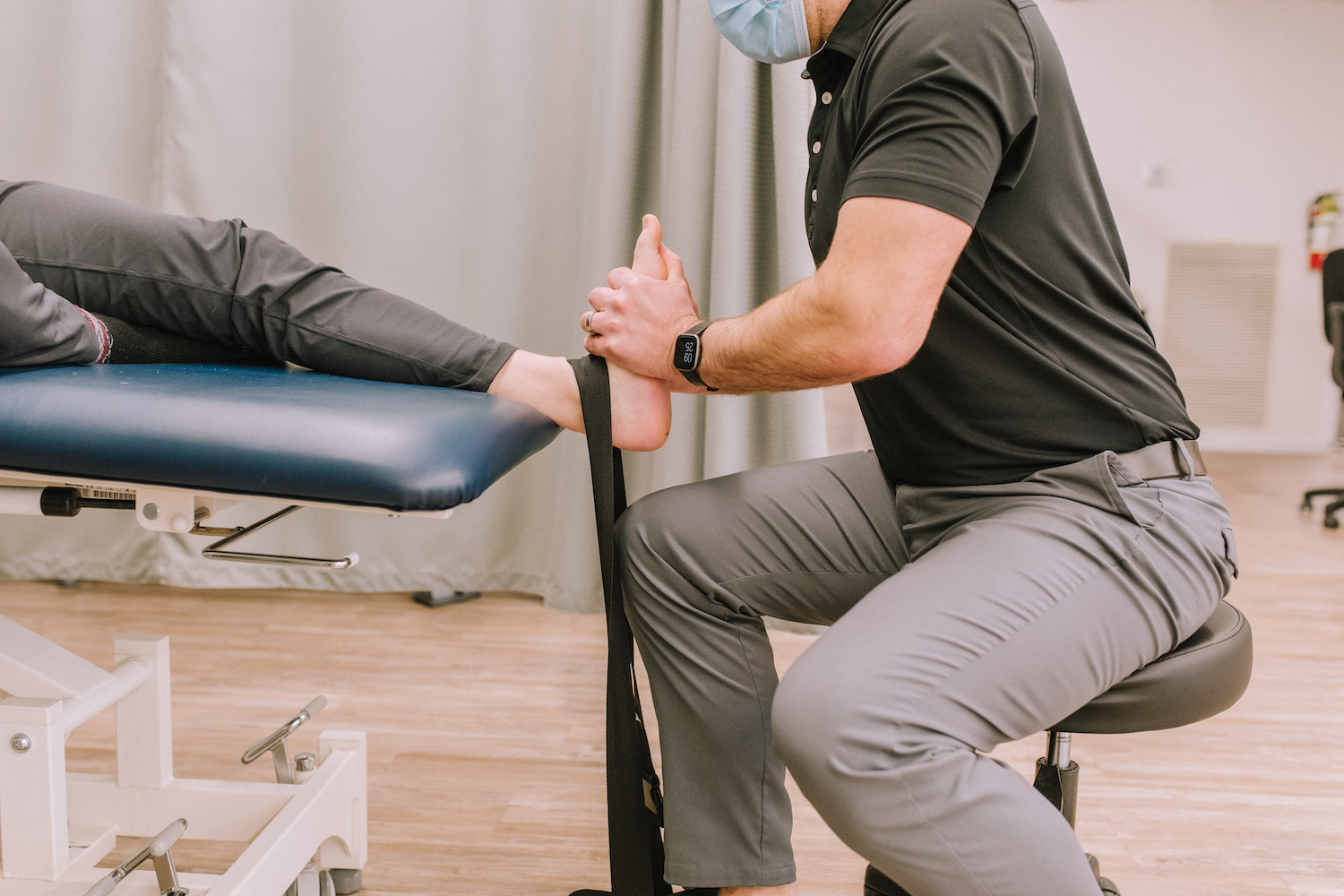
Physiotherapists require a post graduate degree from an accredited University, must pass a national
licensing exam, and be registered with the College of Physiotherapists of Manitoba.
Physiotherapists are considered direct access and do not require a prescription from a doctor.
Physiotherapists work closely with your Physician and allied healthcare team. They are also recognized
and covered by majority of extended healthcare benefit plans, as well as WCB and MPI.
· Neck and Back Pain, Sciatica and Disc Herniation Whiplash and Headaches
· Rotator Cuff Strains, tears and post op recovery
· Frozen Shoulder and other shoulder conditions
· Tennis and Golfer’s Elbow
· Carpal Tunnel and Wrist strains
· Ankle Sprains and fractures
· Meniscus Tears, Ligaments sprains and Patellofemoral Pain Syndrome of the Knee
· Hip bursitis
· Osteoarthritis
· Chronic Pain
· Hand and Feet conditions
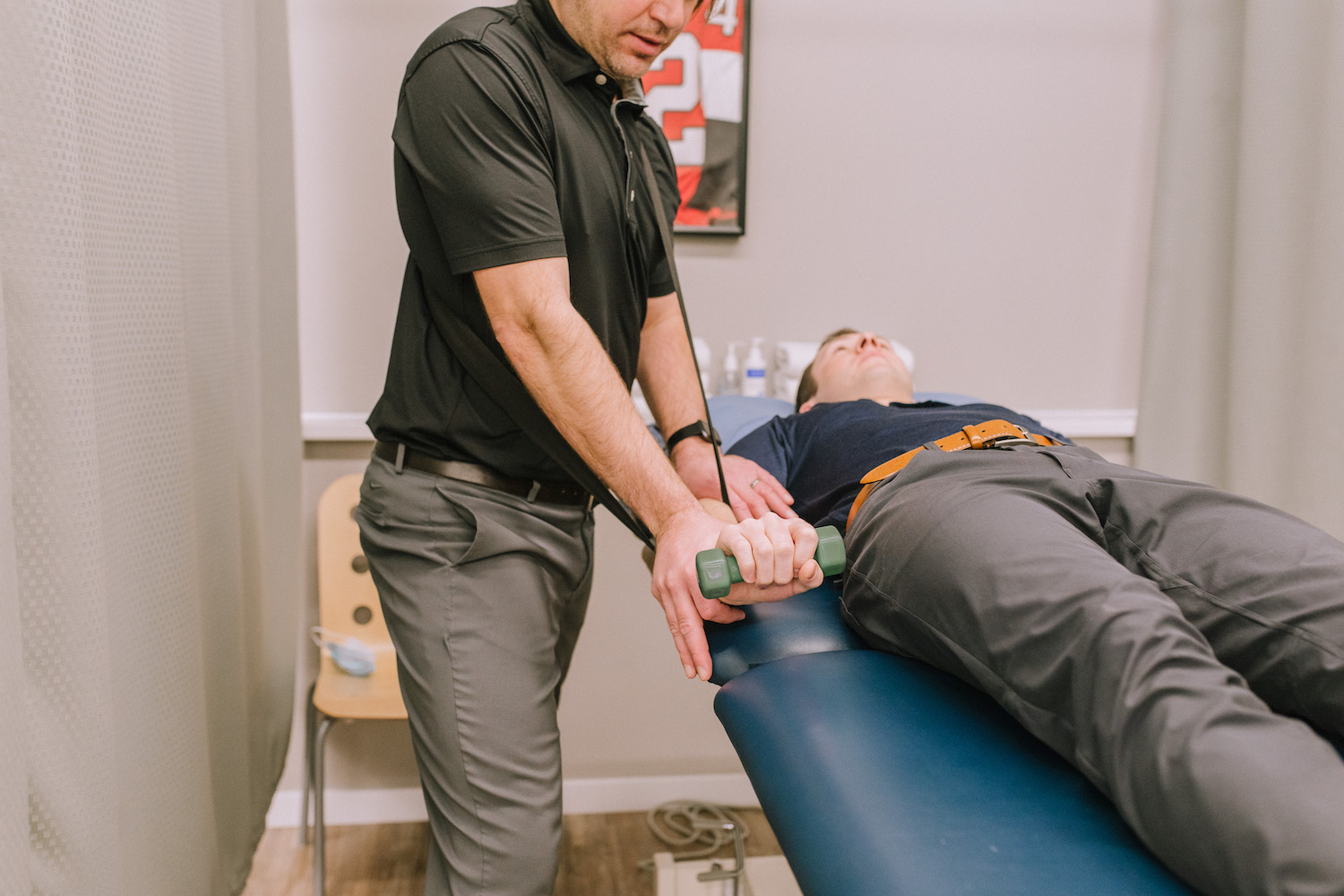
Physiotherapists are also trained to work with neurological conditions such as MS, Parkinson’s, spinal cord injuries and those who are recovering from a stroke. Our Physiotherapist Kaitlyn has taken various
Neuro-Development Treatment (NDT) courses focusing treatment sessions on functional tasks and
activities that allow each client to meet their individualized goals.
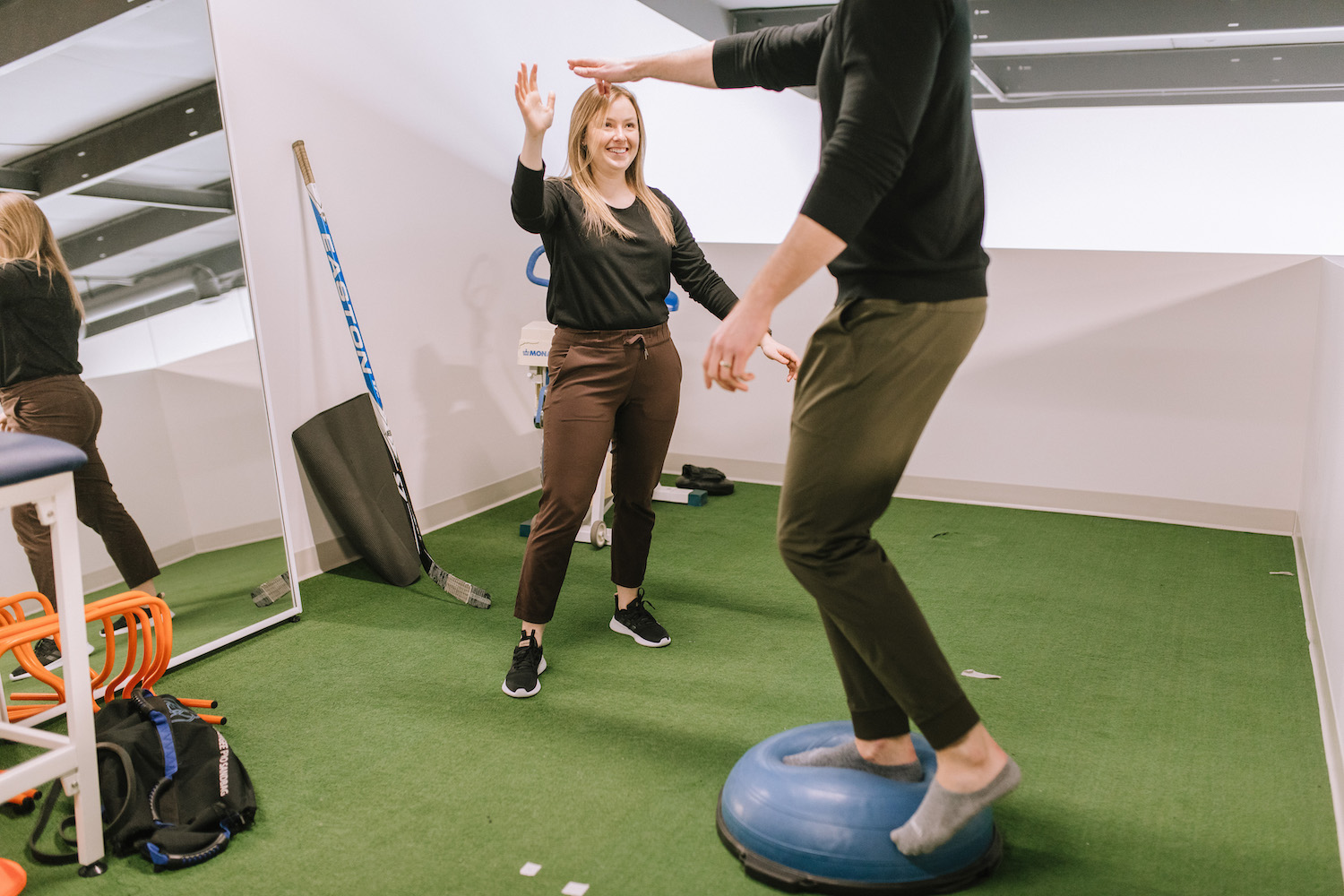
Our staff also provide pediatric assessments, hands on treatment and exercise programming for gross motor development, torticollis and musckuloskeletal injuries. We are very willing to collaborate and
work together with your child’s healthcare team when families are seeking additional access to services
in addition to government funded therapies.
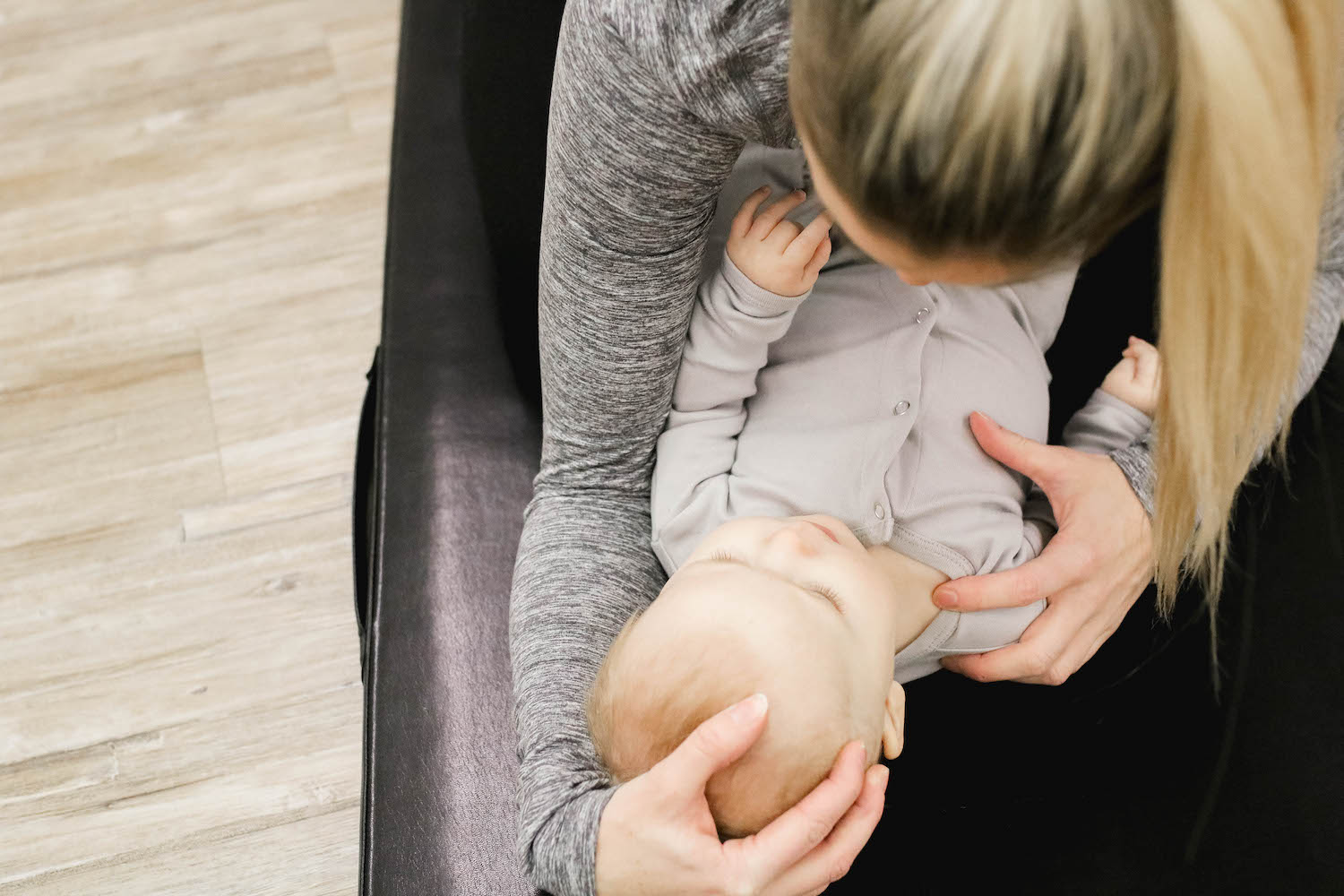
Home Participation Physiotherapy focuses on understanding the client’s point of view, environment
and personal support system.
Our Physiotherapist Rebecca observes a clients’ or family’s needs, helps them to realize where they have potential for change and walks with them towards their goals. This may be individually within the home setting, or within a group setting where there are many benefits to
gathering for the sake of healthy aging.
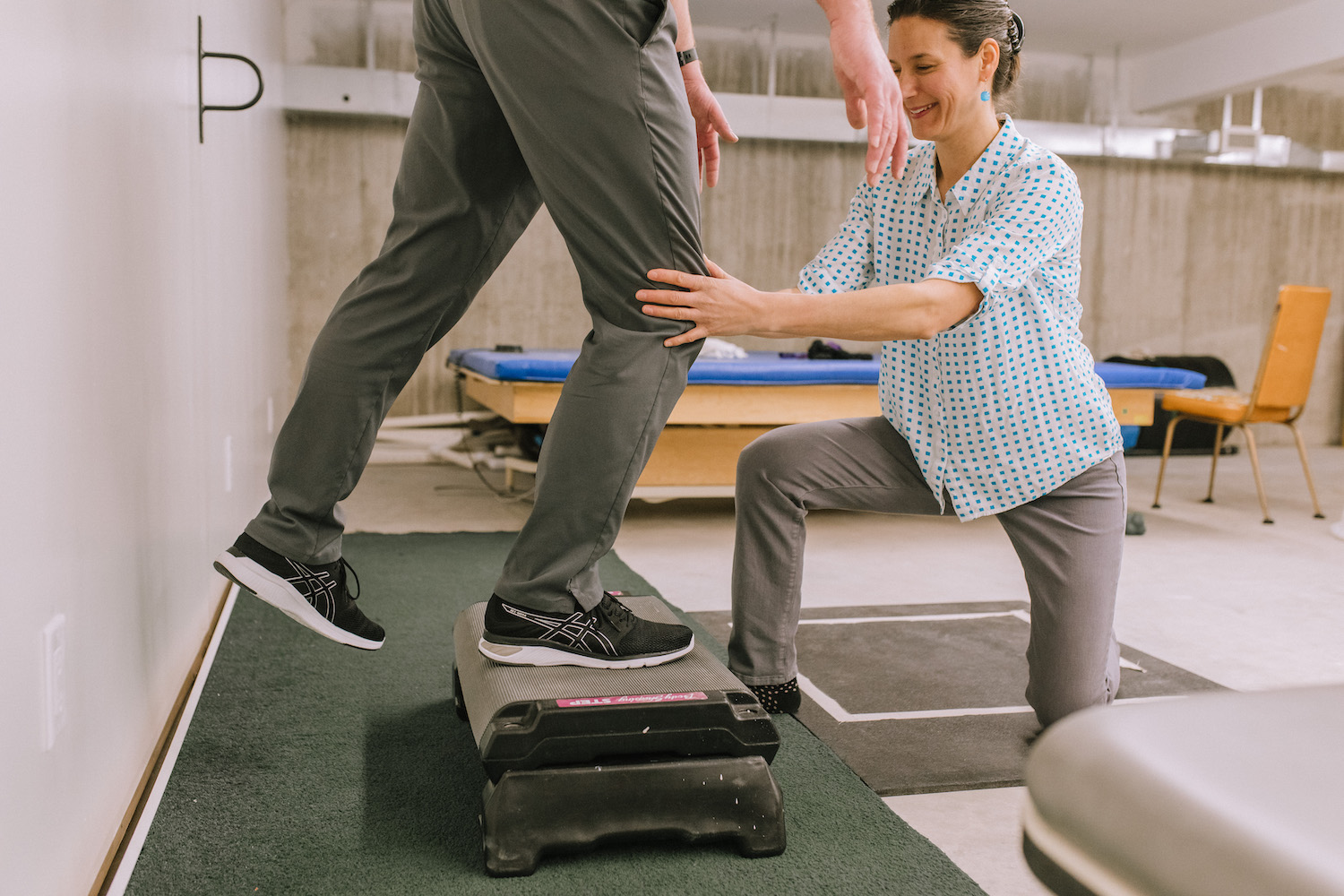
This in-your-home physiotherapy is a process of much
communication and attention to detail. It involves functional task performance, use of hands-on techniques and tools or equipment to achieve goals. Rebecca can also connect the client with
community resources and advocate for them as required. She aims to help clients age-in-place and
continue hearty engagement with life at home and in the community, despite illness or chronic
conditions like stroke or dementia.
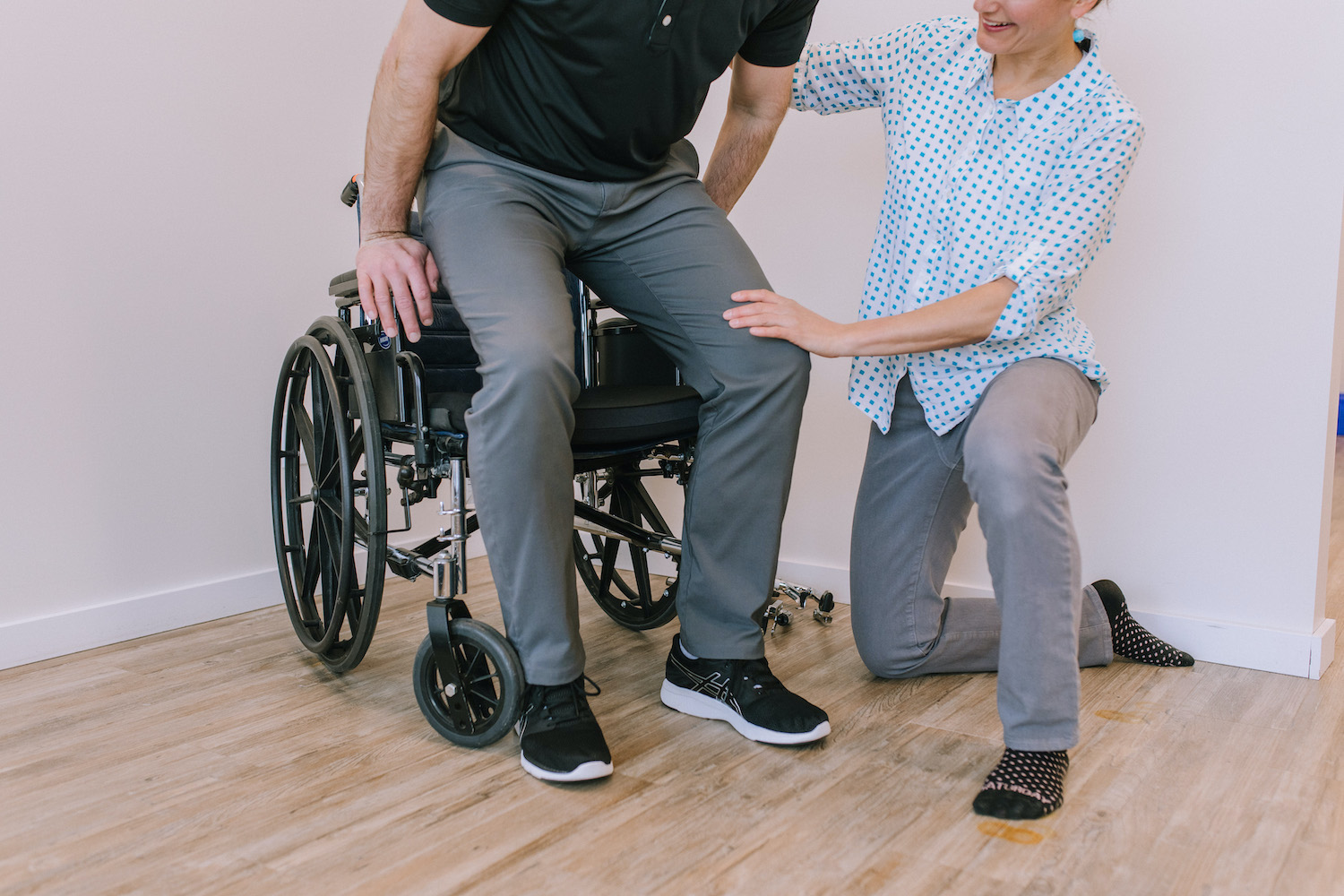
The scope of practice of a Certified Athletic Therapist starts with a bachelor’s degree in Kinesiology, focusing in the areas of the human musculoskeletal system, exercise physiology, biomechanics, emergency care, and clinical rehabilitation.
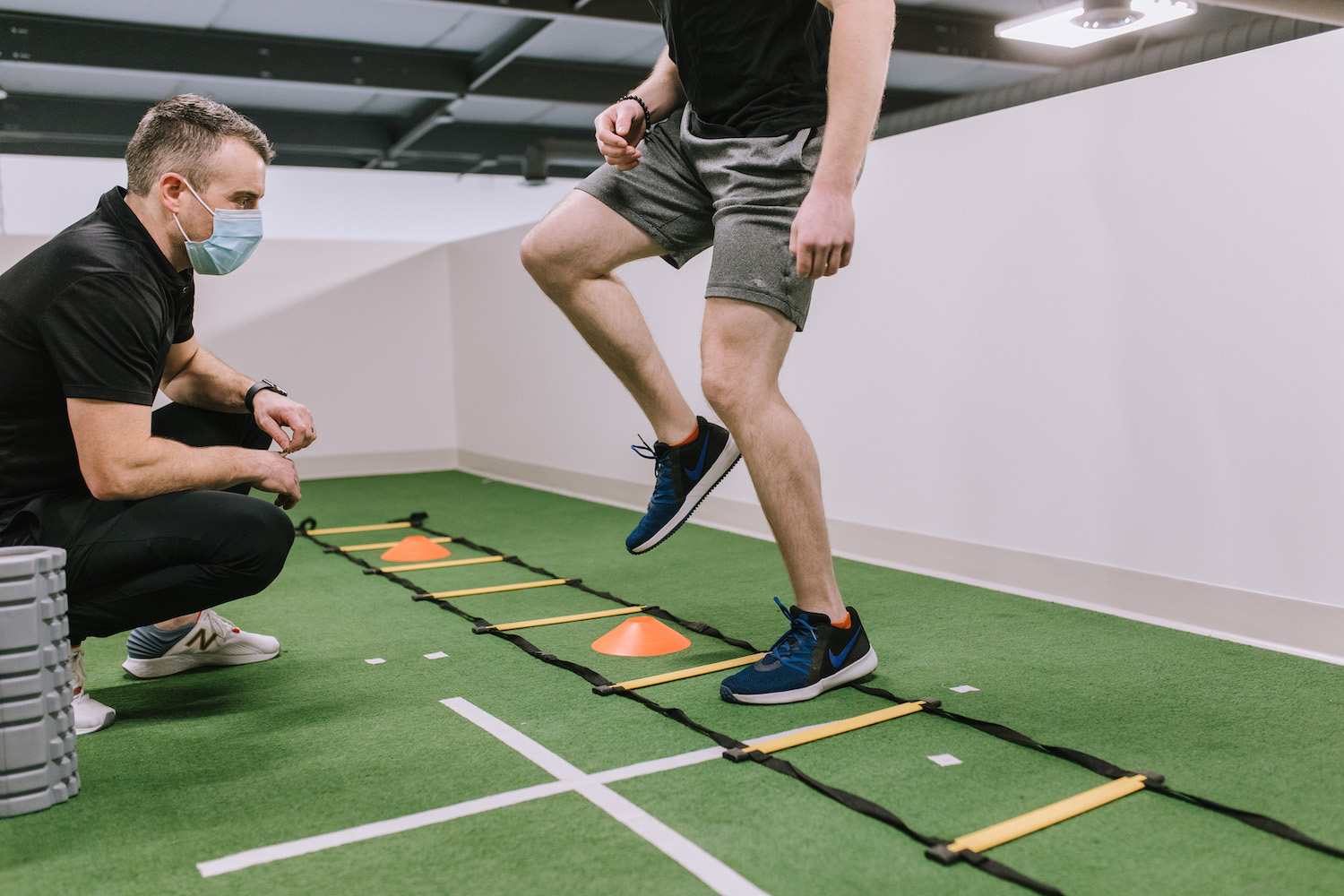
Certified Athletic Therapists must pass a national certification exam and are best known for their quick-thinking on-field emergency care of professional and elite athletes. As the first to respond when someone gets hurt, they are experts at injury assessment and rehabilitation.
It is this same mix of on-site care and active rehabilitation skills that makes Athletic Therapists so effective in treating musculoskeletal (muscles, bones, and joints) injuries of all Canadians, whether on the field or in the clinic. Athletic therapists adhere to the Sports Medicine Model of care.
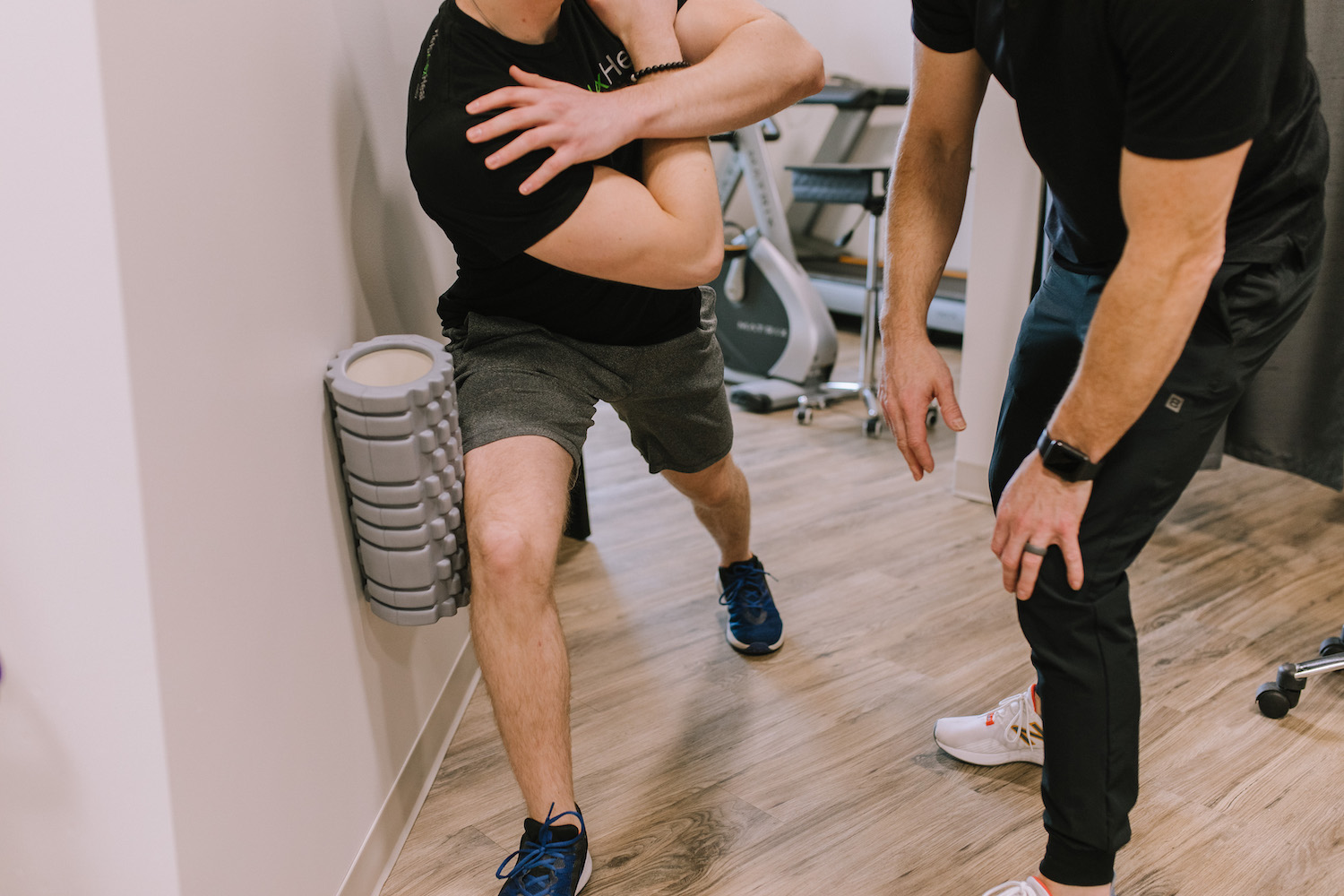
They treat a wide range of patients, from kids with concussions to seniors recovering
from hip replacement surgery, using various manual therapies, modalities, exercise prescription and
even bracing and taping.
The treatment varies but the objective does not: an Athletic Therapist’s goal is
to help clients return to their usual activities, whether that means playing competitive sports or walking to the mailbox and back. They are also recognized and covered by majority of extended healthcare benefit plans (Blue Cross, Canada Life, etc.) as well as WCB and MPI.
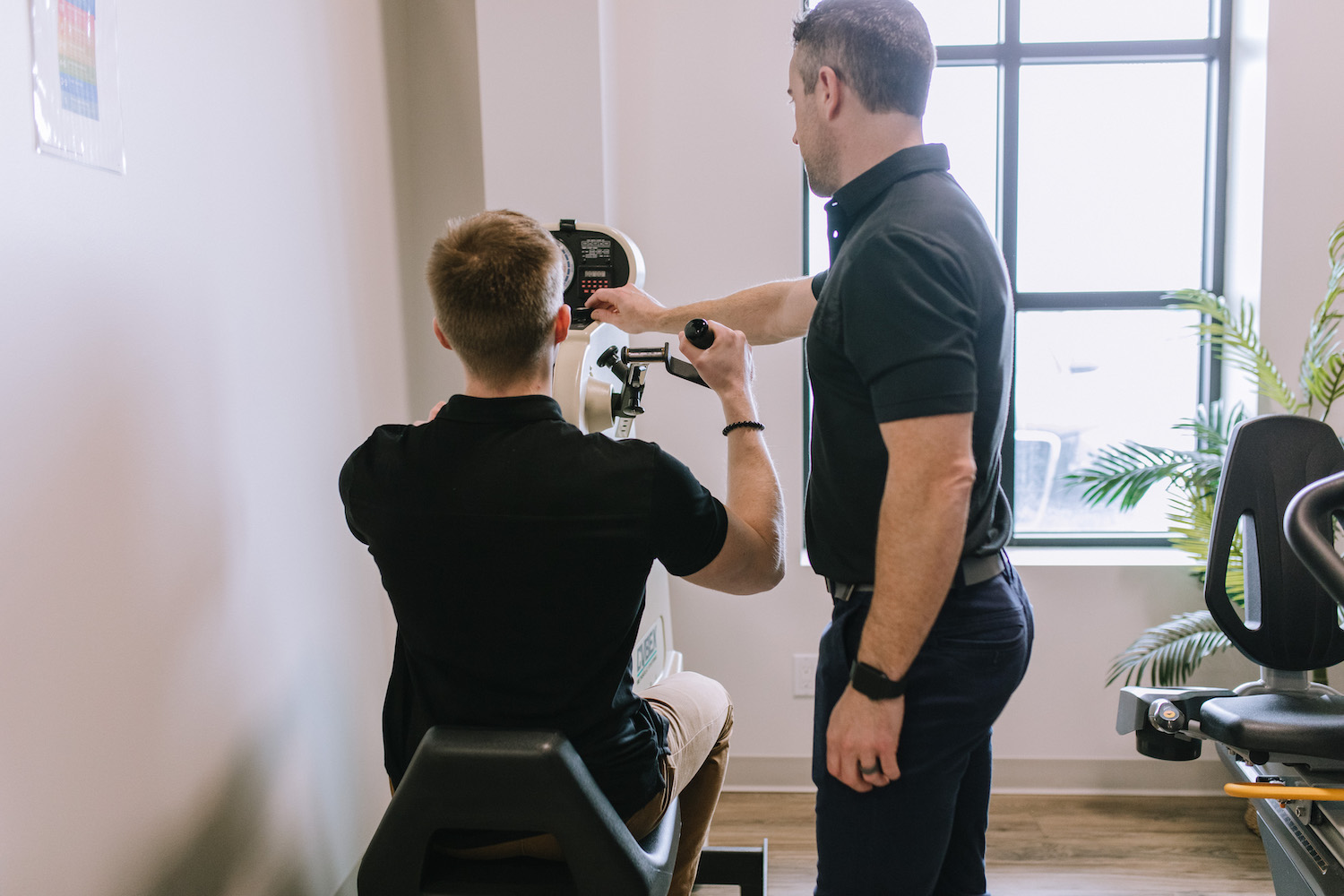
Acupuncture is the use of sterile, thin, one-time use filament needles inserted along meridian points
along the body to promote pain relief, decreased swelling and increased sensation. While Acupuncture
originated in China, there are many evidenced based articles to support its effectiveness in treating musculoskeletal and nerve pain.
In western medicine it is believed that inserting needles along points
in the body, it creates an increase in blood flow and the release of pain relieving hormones called
endorphins.
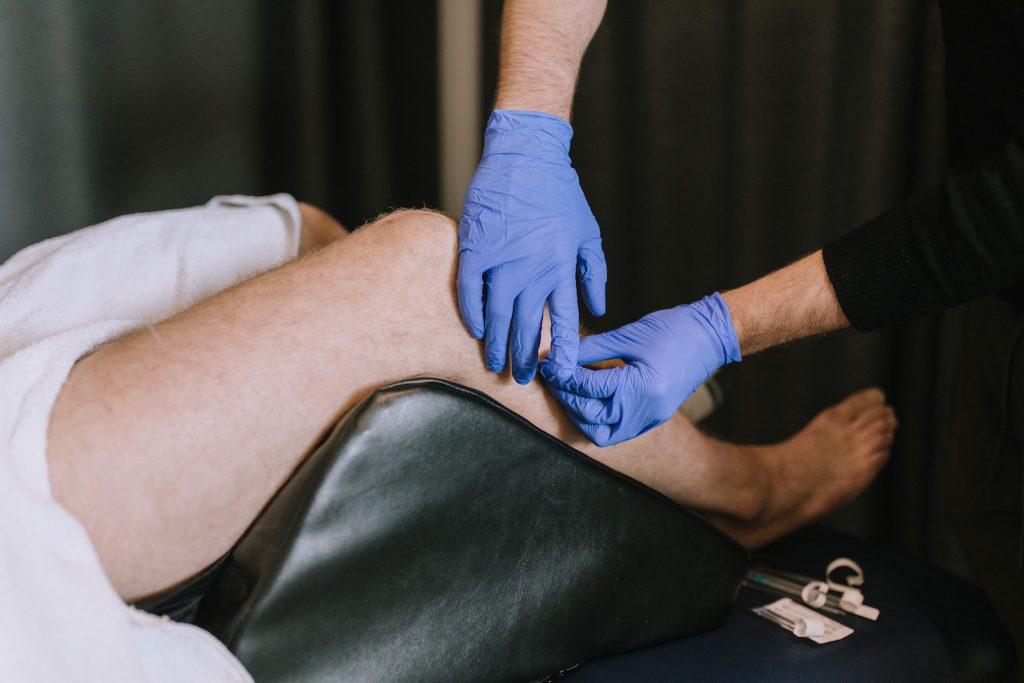
Physiotherapists who complete additional training and are certified to practice
Acupuncture in the province of Manitoba, can use Acupuncture as part of their patient’s treatment plan.
Physiotherapists must use Acupuncture only for conditions that fall within their scope of practice, these
include neuro-muscular conditions addressing acute pain and inflammation, swelling, and nerve pain.
Acupuncture is commonly used in the clinic for treating headaches, osteoarthritis, sciatic and low back
pain, chronic pain, and various other conditions.
Dry Needling is another technique similar to Acupuncture that trained Physiotherapists can use for patient treatment, where they take a filament needle and place it into taught and painful myofascial trigger points (painful knots). 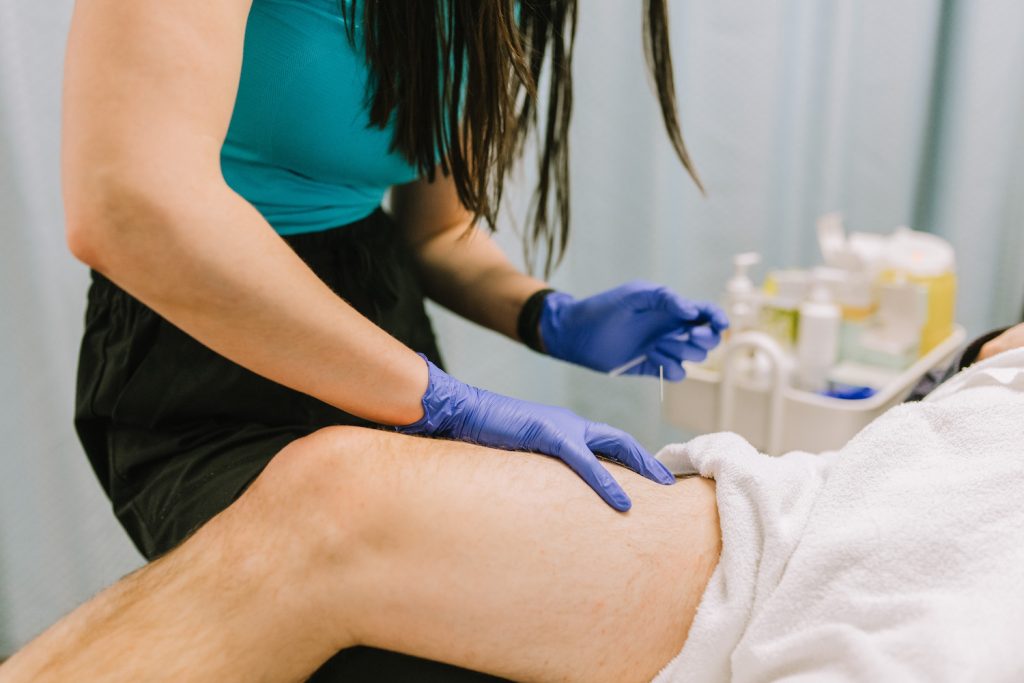
A local twitch response is achieved which stimulates an analgesic effect
that decreases pain, improves muscle and tissue length and strength. Dry Needling is most commonly
used in acute injuries, athletes and chronic pain, but can be useful in various other conditions as well.
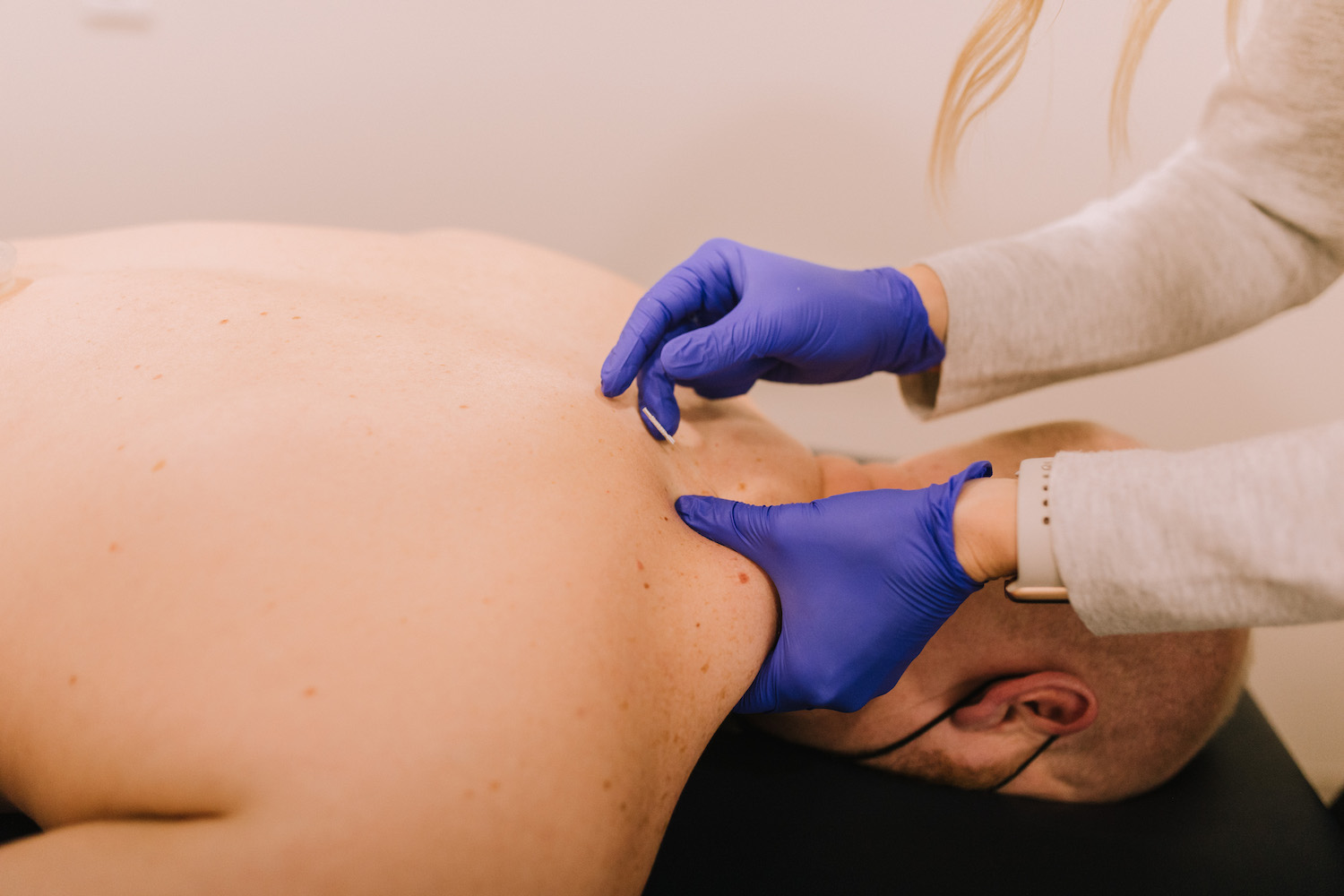
Women’s Health and Pelvic Floor Physiotherapy is another post graduate area of study where qualified
physiotherapists can perform both external and internal assessment and treatments of the pelvic floor muscles. The muscles of the pelvic floor work to stabilize the pelvis, support the internal organs, assist
in lymphatic drainage of the lower extremities, sexual function and bowel and bladder control.
Common conditions treated include:
· Stress Urinary Incontinence (bladder leakage with cough, sneeze, laugh, jump, run etc)
· Urgency and Frequency (inability to hold urine and increased trips to the bathroom)
· Pelvic Organ Prolapse (feeling of heaviness and falling out, pressure or bulging in the perineum)
· Pain with Sex (Dyspareunia)
· Pelvic Pain (Vaginissmus, Vulvodynia, Vestibulodynia)
· Constipation, hemorrhoids or fecal incontinence
· Pregnancy related pelvic girdle pain and birth preparation
· Post Partum Recovery and Rehabilitation
· Post Surgical Recovery Rehabilitation (hysterectomy, prolapse repair, bladder lift, caesarean
section etc)
· Diastasis Rectus Abdominus (Ab separation)
· Endometriosis, PCOS and other conditions
· Post Cancer Rehabilitation
· Genito-urinary Syndrome of Menopause
· Abdominal, Hip or Low Back Pain among other orthopaedic conditions
It is important to note that although an internal pelvic exam is considered the gold standard for complete evaluation and assessment of the pelvic floor, it does NOT have to be performed in order for
successful management and treatment of a condition, if a patient is not comfortable with this approach.
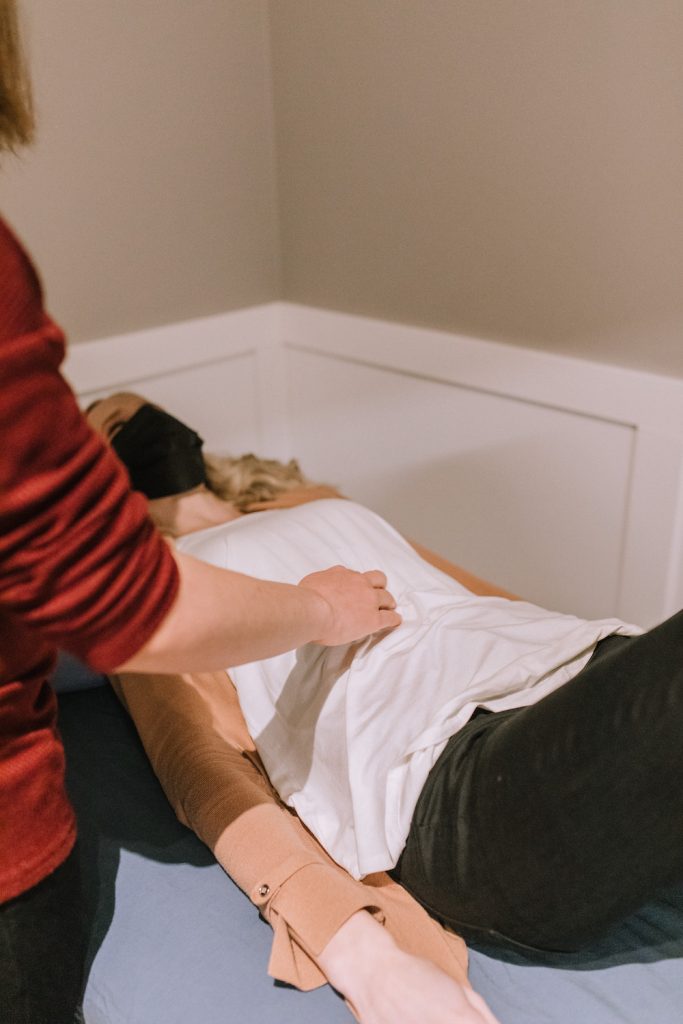
The purpose of an internal exam is to assess the muscles for any areas of pain, range of motion (the
length of the muscles), strength (ability to contract and relax without other muscles compensating), and
lastly the function of the pelvic floor muscles (can they coordinate their job with the task you are
asking it to perform), all similar assessments to an evaluation for any orthopaedic condition.

Pelvic Floor and Women’s Health related assessments are approximately 1.5 hours in length, which
give plenty of time for a thorough patient history, as well as both a movement pattern screen, and both
an orthopaedic and pelvic floor exam. Thorough education is provided on the goals of both the
assessment and treatment session, and a plan for treatment is discussed and agreed upon prior to
proceeding.
In the hands of a skilled practitioner, there should NEVER be any pain involved. Pelvic
floor internal exams do not take place if there is pain, or if a patient is not ready to proceed. Only a gloved single finger insertion is used to assess the deep layers of the pelvic floor. Those who choose to forgo the internal exam can be assessed via external palpation over clothing and visual assessment.
Each assessment takes place in a private room with thorough education provided prior. Our goal is to
help you leave feeling empowered, educated in how your body works and moves, and confident in your
goals for therapy.
· Swedish massage techniques
· Deep tissue techniques
· Trigger point therapy
· Myofascial release
· Instrument assisted techniques (suction cupping, instrument assisted soft-tissue mobilization/scraping, etc.)
Our staff of registered massage therapists assist out patients by providing additional pain and stress relief and play an important role in a rehabilitative team approach.
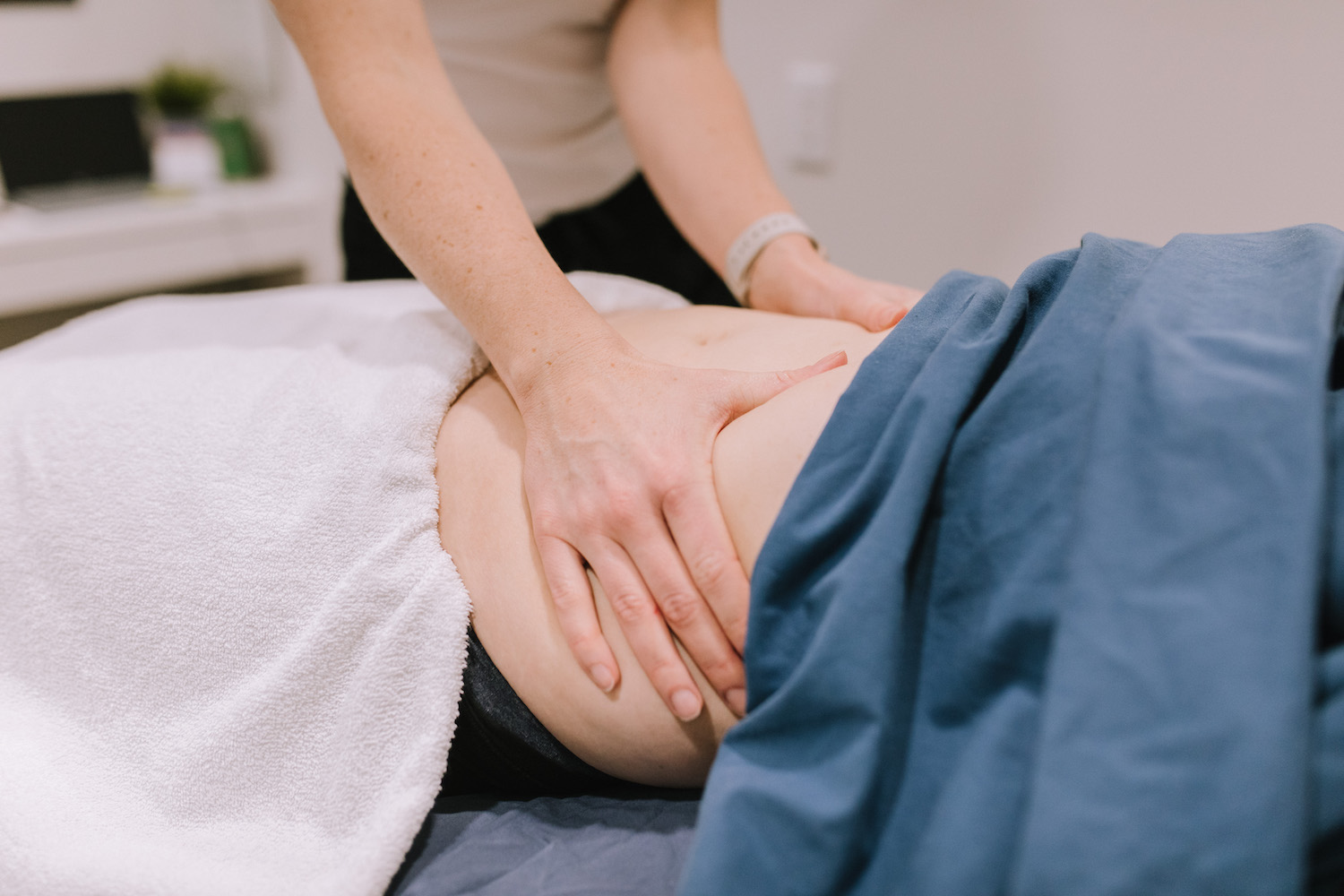
Bracing can be used to treat many different acute conditions, from fractures, sprains and strains, to
management of chronic conditions like osteoarthritis, tendinitis, carpal tunnel syndrome, and many more.
We have in-stock, a wide range of popular braces; many of which can be covered under
Manitoba Health with an appropriate doctor’s prescription!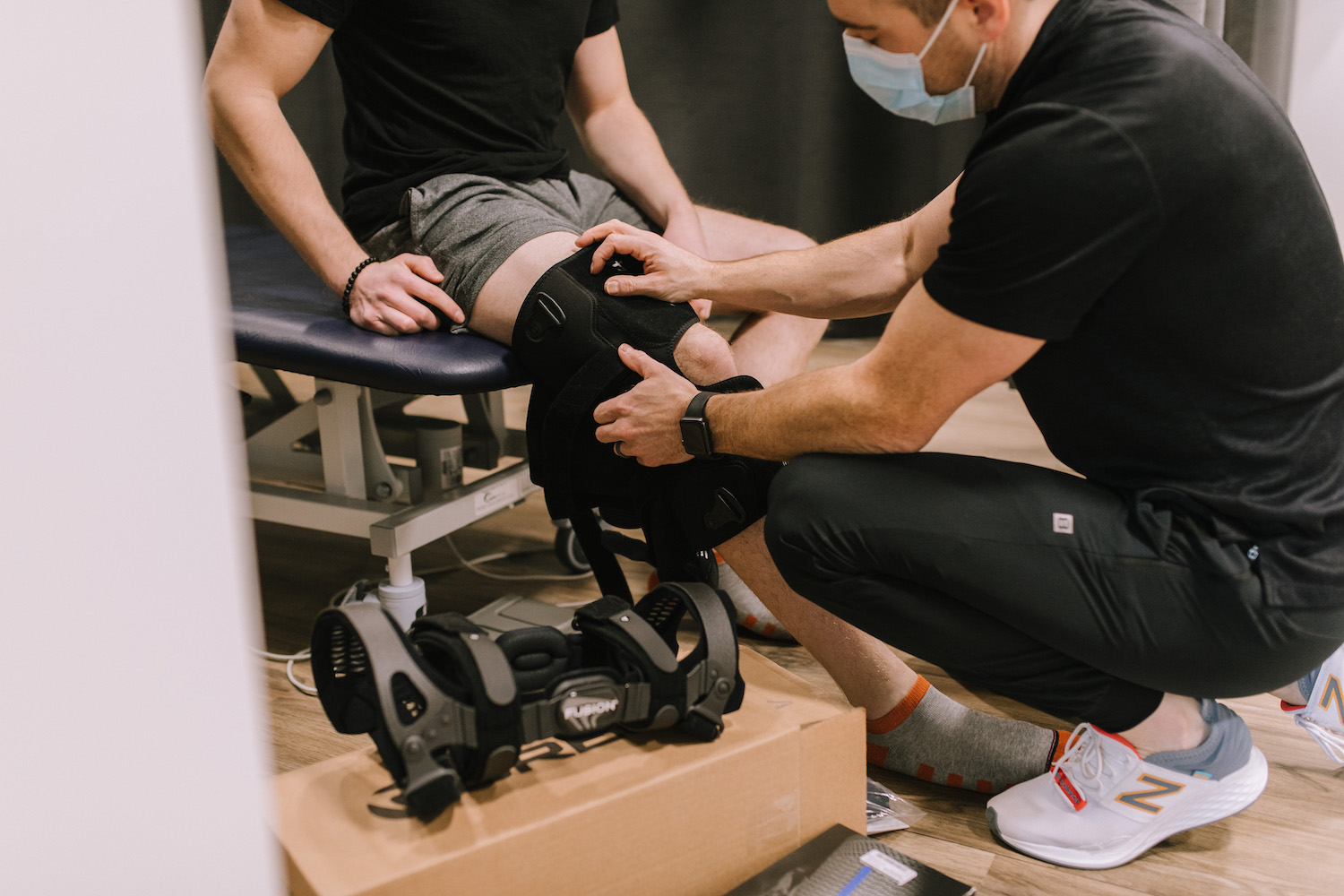
If we do not stock it, we receive weekly
orders from our supplier – Innovative Medical Supplies. Check their website HERE for a full list of orthopaedic braces and medical supplies that we
are able to order.
Cold therapy is a time-tested method for obtaining relief from pain, especially when you are injured, strain a muscle, or are recovering from surgery. This technique is part of the RICE (Rest, Ice, Compression, Elevation) method for healing and is widely used across the world. One of the common ways to utilize cold therapy is with an ice pack held in place with an elastic bandage.
Advances in technology have made it easier to apply cold therapy when you need it. Cold therapy machines work by circulating water through an ice reservoir.
The reservoir connects to a wrap that
provides the element of compression, which may help reduce swelling. With a cold therapy unit, you
get the combined benefits of therapeutic cold and targeted pressure to aid in your healing.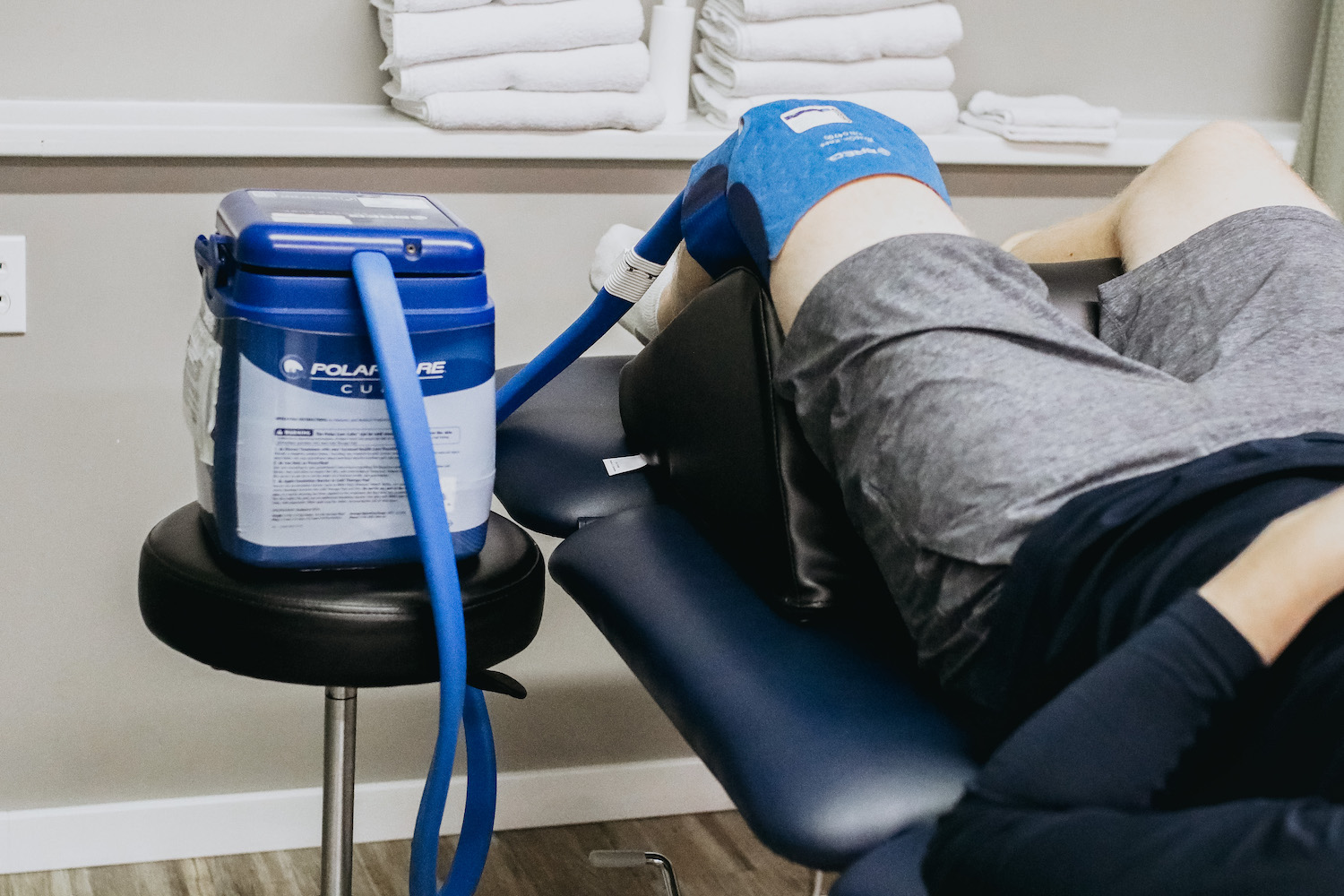
Cold therapy machines may be recommended by physicians, athletic trainers and physical therapists alike for one of many reasons. More Efficient than Ice The combination of compression and cold has been clinically proven to be more effective than ice therapy alone.
Cold alleviates pain and reduces
swelling by restricting blood flow to the area, and compression also reduces swelling and allows the
therapeutic cold to penetrate deeper and last longer.
Convenience and Portability: Applying ice packs can be a hassle, especially for areas such as your knee or shoulder. It is also difficult to control the
temperature of an ice pack, and the ice may melt quickly. With a cold therapy unit, you get consistent temperature throughout each session because cold water is circulated throughout the machine.
These
machines are also often portable, so they can be used at home. Less Pain Medication: Cold therapy
units decrease pain by numbing nerve endings in your body. This slows down communication between
your body and your brain, resulting in less pain. Using a cold therapy machine may help you rely less on medication as you recover from surgery or an injury.
Patients who are looking to have musculoskeletal or sports related injuries looked at in a timely matter can see Sports Medicine Doctor Dr. Kurt Kauenhofen at our office on Wednesday mornings! (typically the Doctor is there three Wednesdays per month unless called to emergencies.
We suggest calling ahead the day before to confirm!).
Doors at 8:45 am and you are provided an appointment time. There are typically between 5-9 appointment slots available and the clinic is first come first serve. Appointment times are given and patients are able to wait in the waiting room or leave and come back for their scheduled time slot.
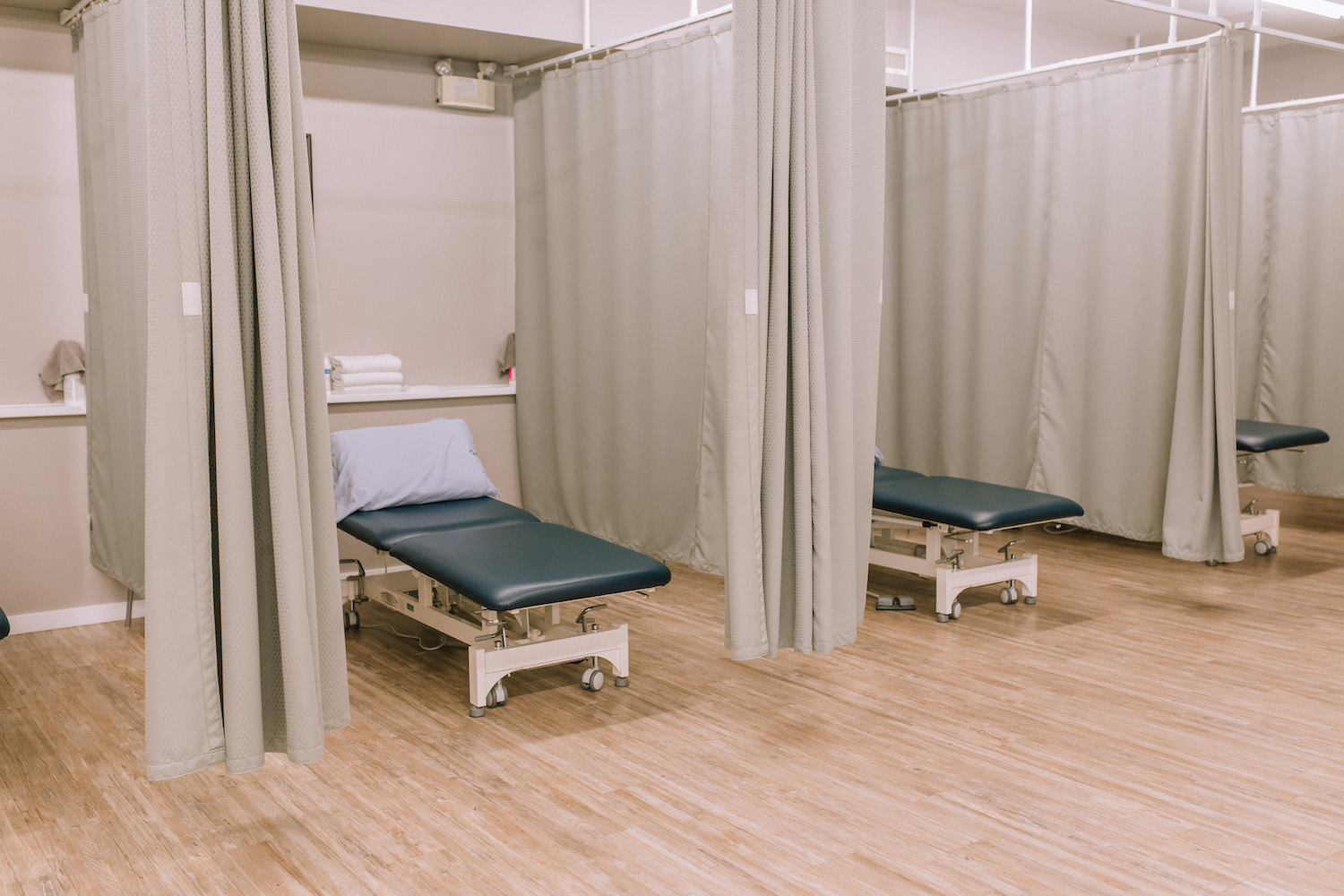
History: Ease of access to specialty services in a rural area can be challenging, and sports medicine is
no different. Thankfully, the Pembina Valley has increased the number of orthopaedic and sports
medicine professionals in the area which has shortened wait times drastically.
In 2017, to help support the “urgent care” access for musculoskeletal injuries, Dr. Kauenhofen from Menzies Medical Centre began providing care on a walk-in basis out of our Morden clinic. This service
streamlines patient care for assessment/diagnostics and treatment, as well as communication between
doctor and therapist.
A custom orthotic is a device designed to align the foot and ankle into the most anatomically efficient position. They look like insoles, but are biomechanical medical appliances that are custom made to correct your specific foot imbalance.
Custom orthotics work on your feet much like glasses work on your eyes – they reduce stress and strain on your body by bringing your feet back into proper alignment. The plastic body of the custom orthotic helps to re-align the foot by redirecting and reducing certain motion that takes place during the gait cycle. Custom orthotics fit into your shoes as comfortably as an insole – and they have the advantage of having been made from precise imprints of your feet.
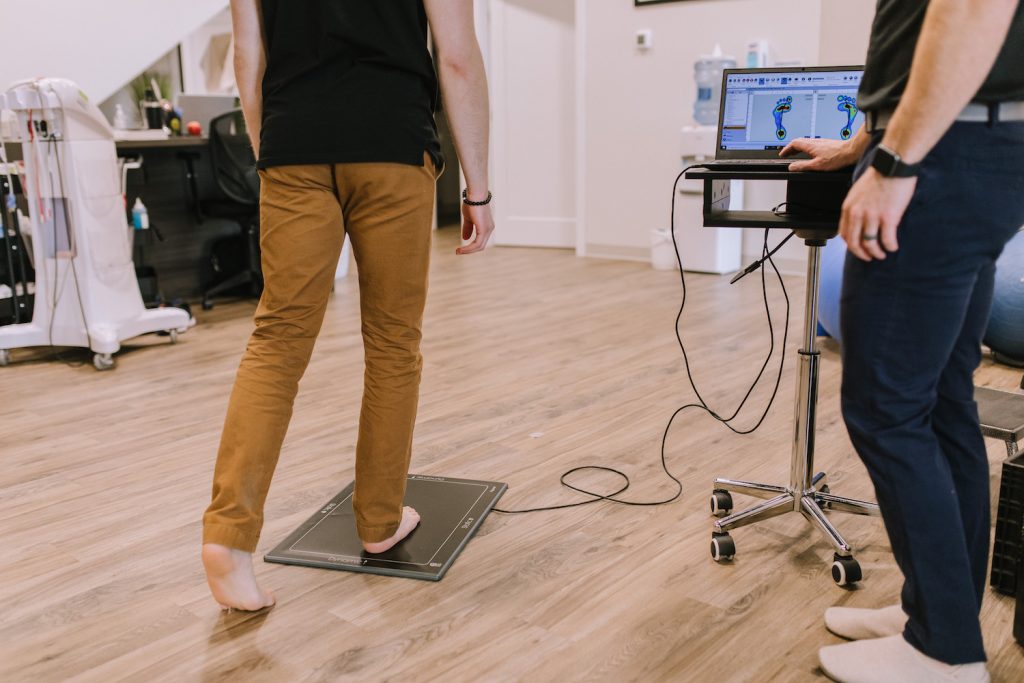
Paired with our in depth orthopaedic assessment, we use a system called The TOG GaitScan™. It is an innovative diagnostic tool and digital casting device that allows us to analyze patient biomechanics and order custom orthotic products. With 4096 sensors and a scan rate of 300 frames per second, the GaitScan™ is the industry leader in dynamic scanning capabilities. With all of this information, we decide whether or not custom orthotics are suited for your current issues, and devise a well rounded therapy plan that will also include a home exercise routine and other treatment techniques.
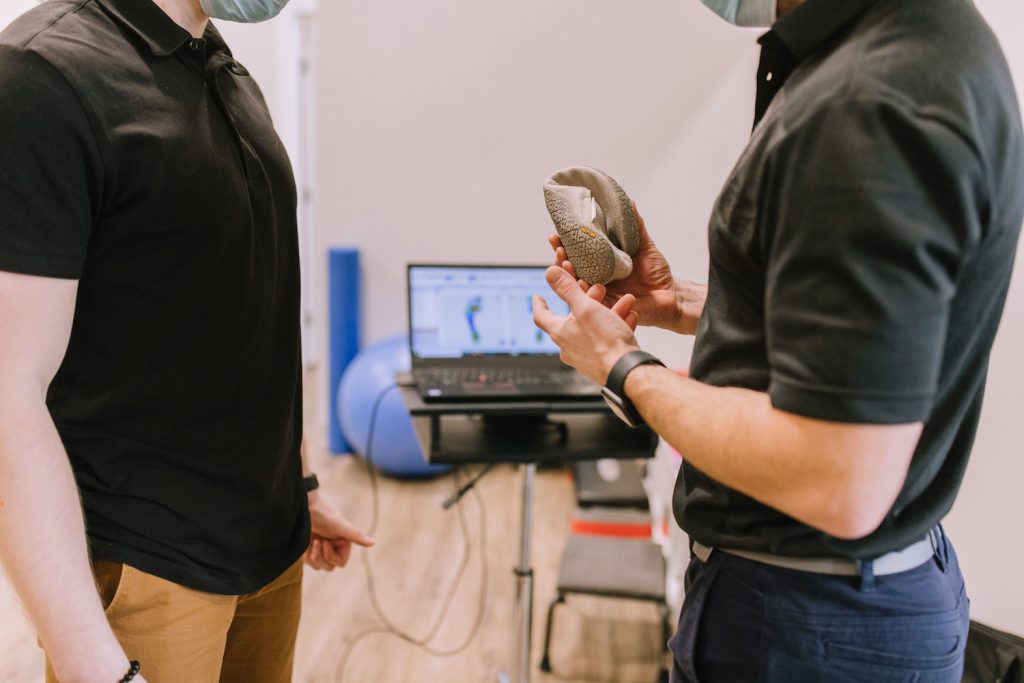
Vestibular Rehabilitation is a form of exercise based therapies that are designed to help alleviate and/or treat both primary and secondary conditions of the inner ear which can cause symptoms of dizziness, vertigo, & imbalance.
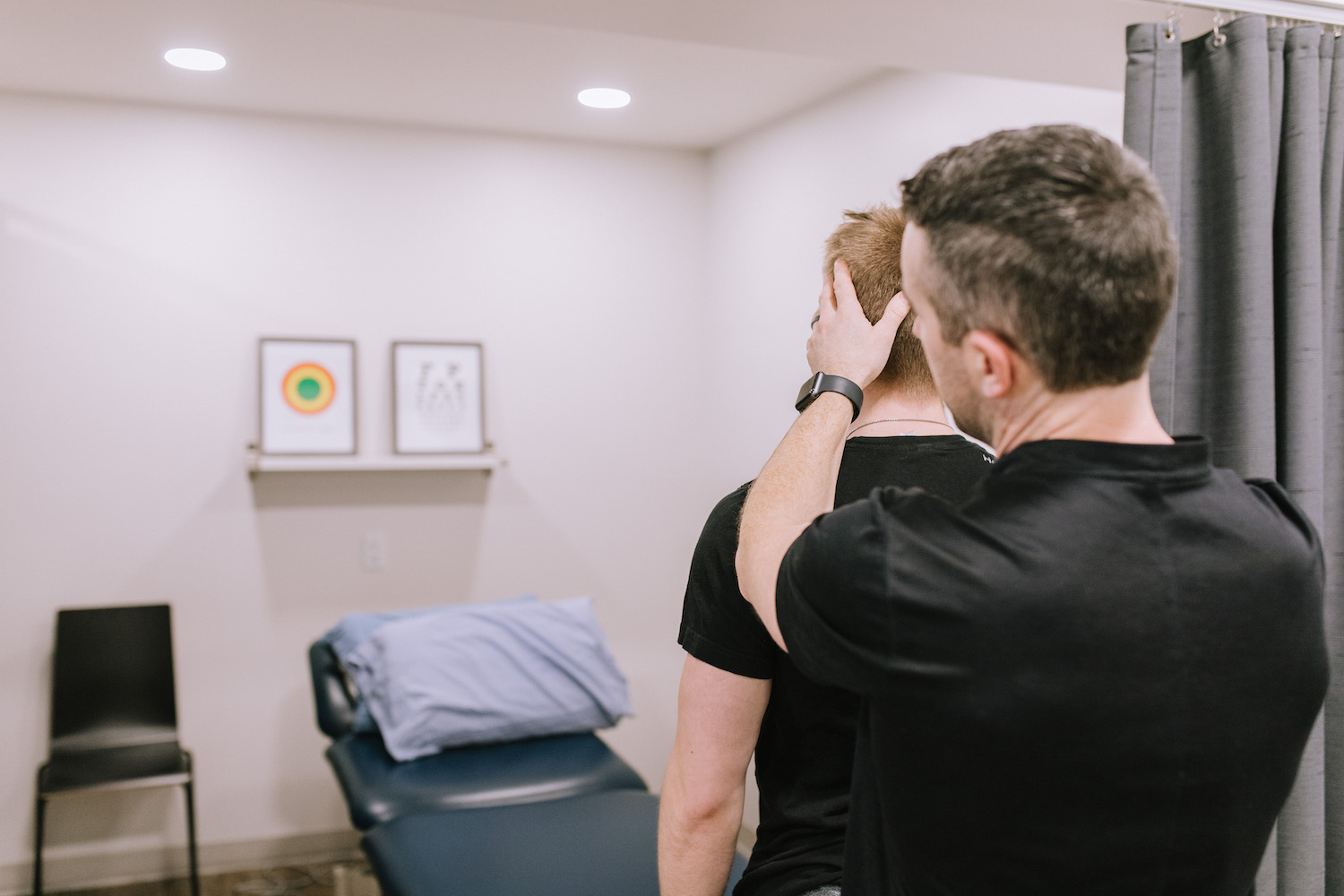
The most common disorders treated include BPPV (benign paroxysmal positional vertigo) which is a positionally induced room spinning sensation that lasts seconds to minutes, labyrinthitis or vestibular neuritis which is an inner ear infection that cause cause dizziness, nausea and vomiting and imbalance, Meniere’s disease which also creates similar symptoms which last days in duration, age related dizziness and imbalance, and vestibular migraines.
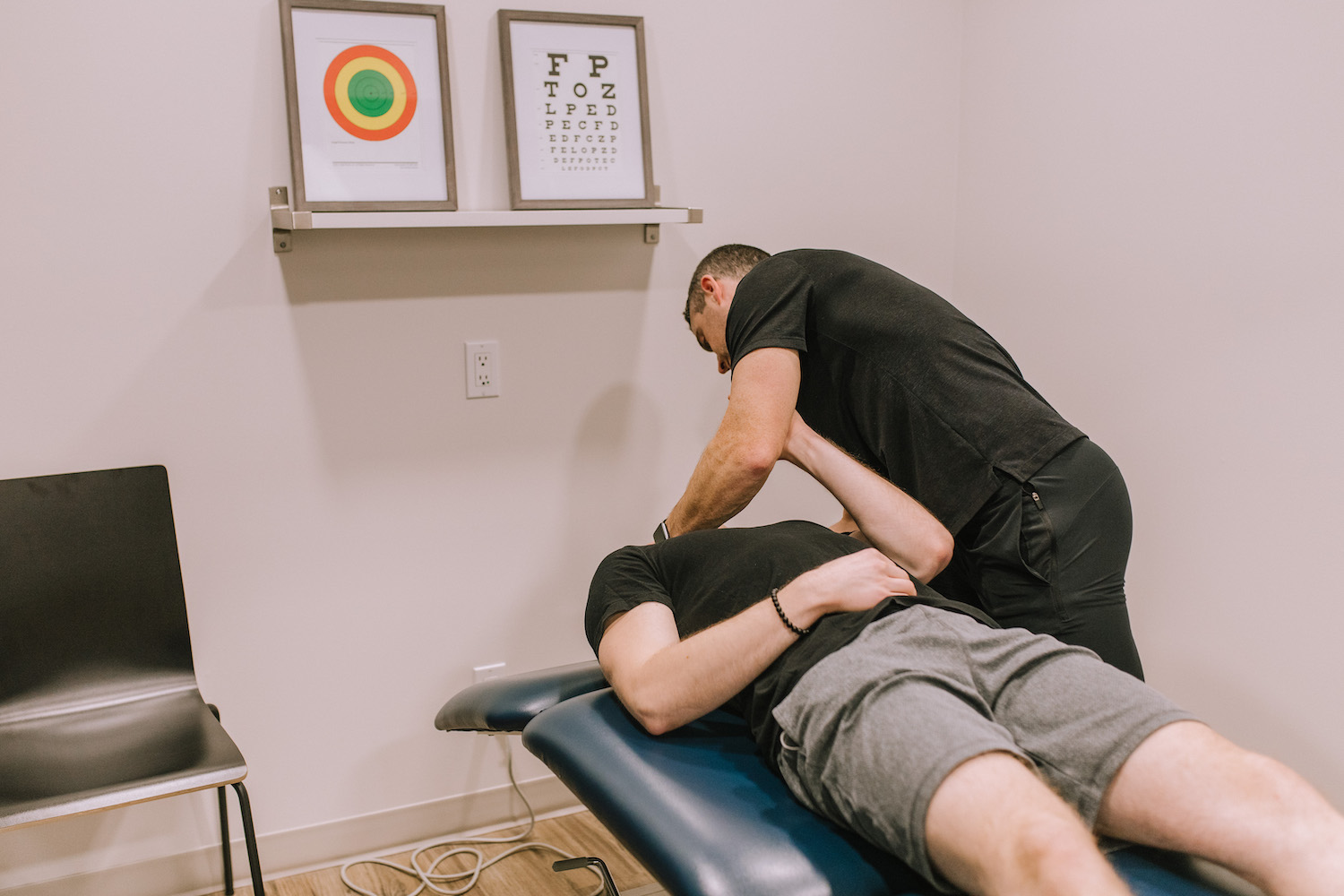
Physiotherapists are also trained to address both the cervical and vestibular componentes related to head injuries, TBI’s and post concussion syndrome (PCS).
Physiotherapists also work closely with Dentists and allied healthcare providers to treat and alleviate symptoms of jaw dysfunction that can include pain, clicking, popping and locking caused by grinding, muscle/myofascial pain, infections like capsulitis, disc displacement with reduction and stiffness from conditions like osteoarthritis.
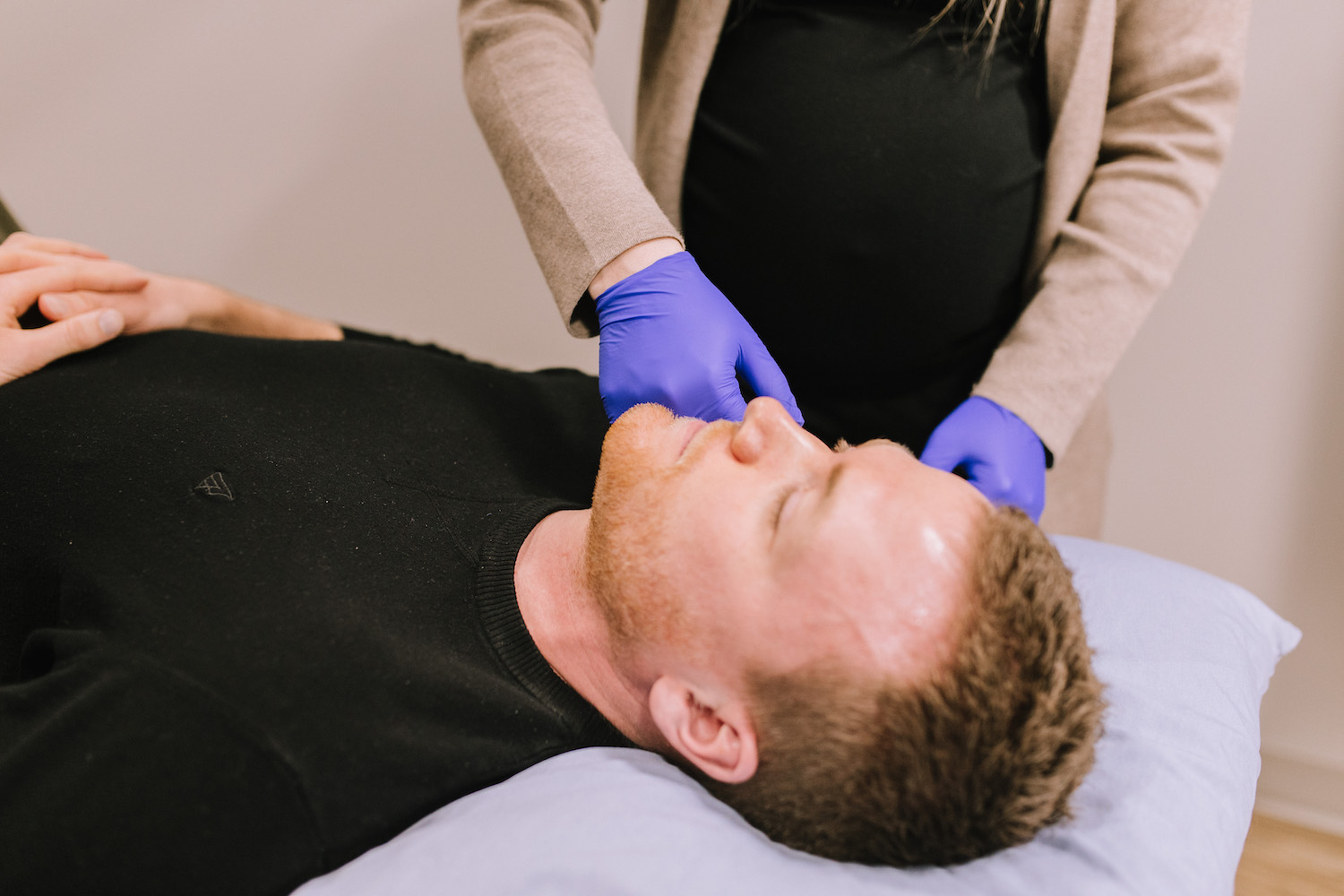
Treatment can include intra-oral and extra-oral massage, ultrasound, acupuncture, stretching, strengthening, manual therapy, education, assessment of postures and headaches as well as communication with other practitioners regarding the possibilIty of custom night guards.
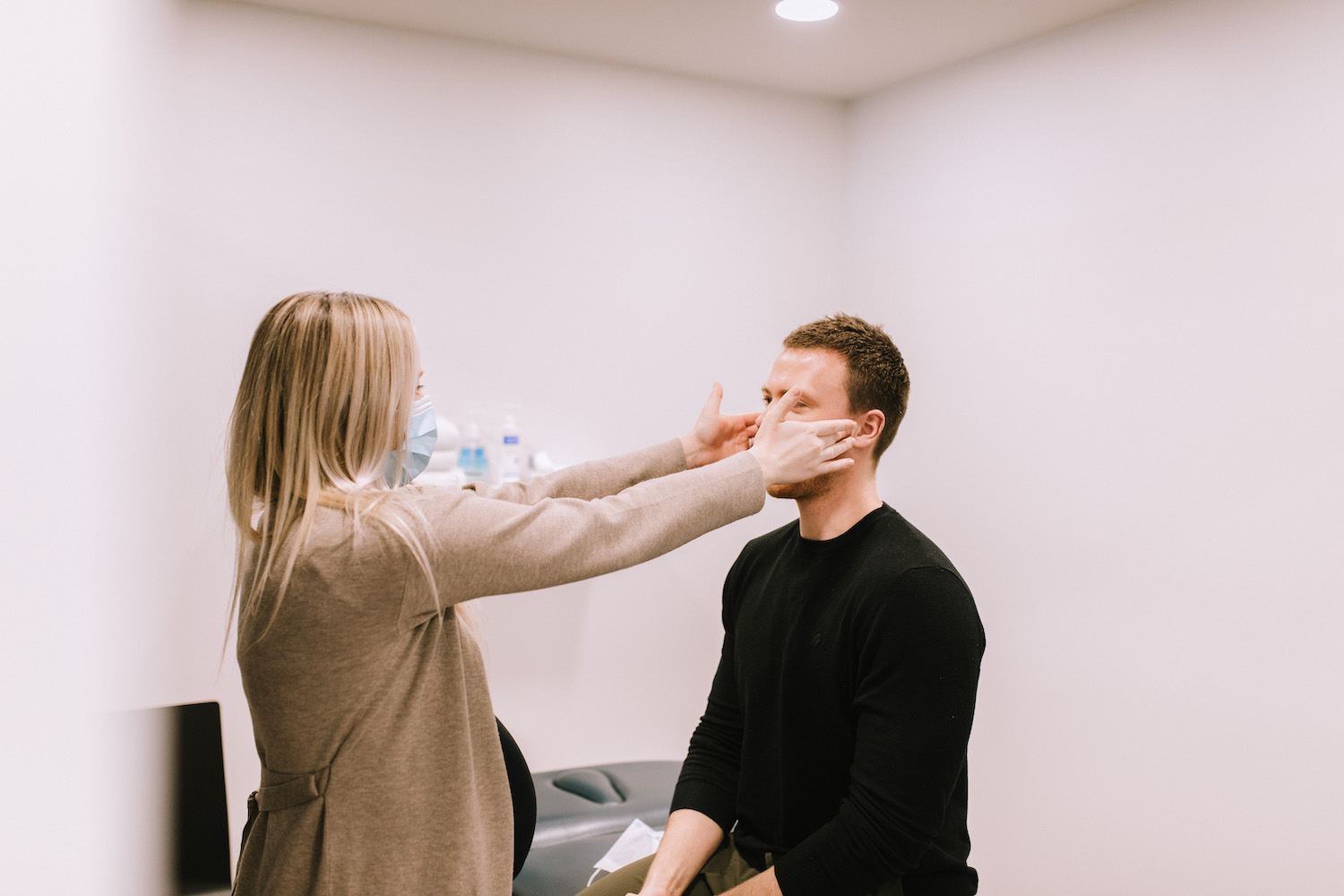
Our Winkler and Morden facilities are equipped with treadmills to provide gait and running assessments that can be helpful in identifying biomechanical abnormalities in a runner’s gait cycle, that may be contributing to wear and tear, breakdown and possibly injury during an individual’s running or walking program.
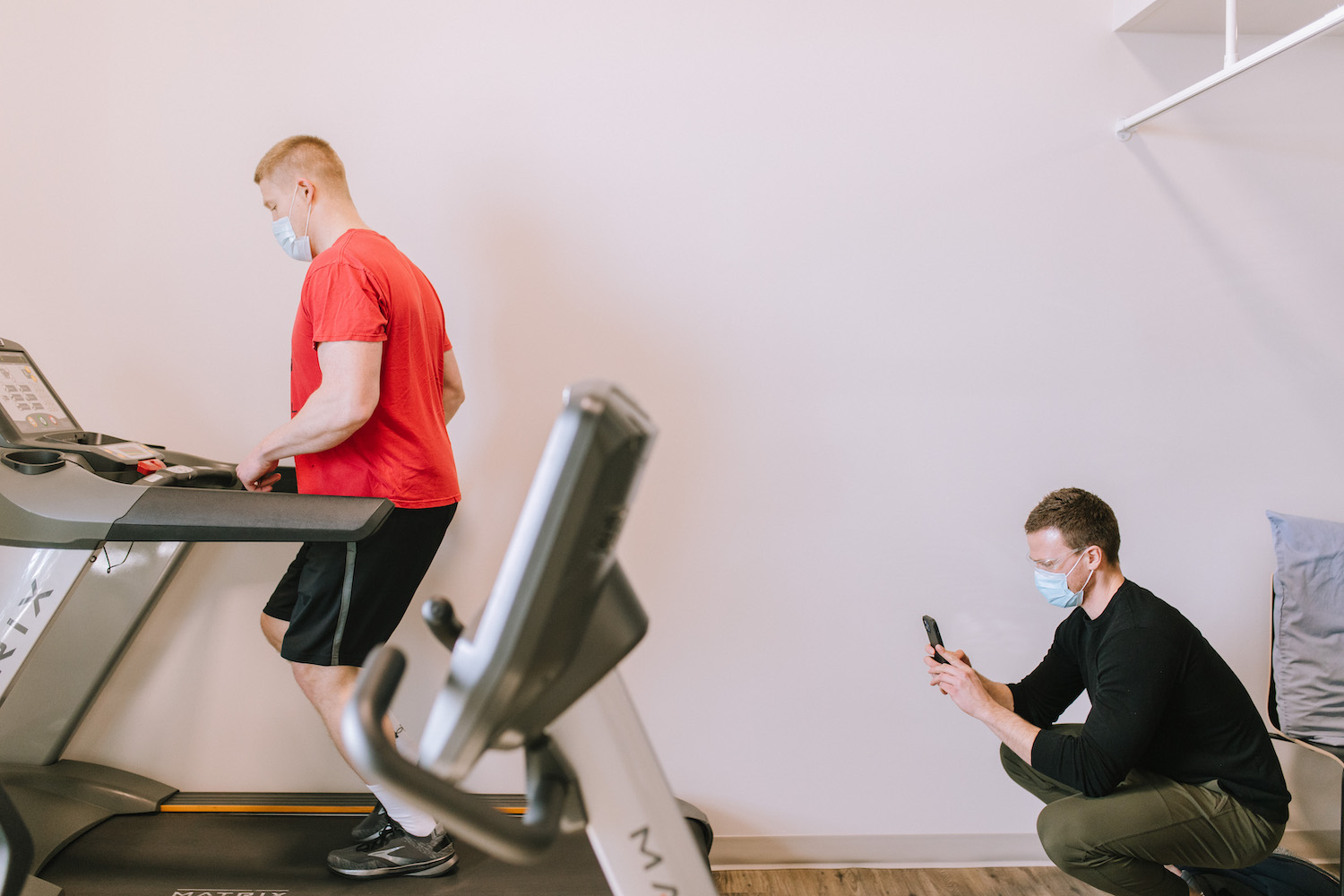
Therapists complete functional movement scans while also using visual and video assessment to break down any areas of weakness that would benefit from improvement
Still have questions? Contact us: HERE

Fee Schedule
Below is our current fee schedule for our services. Should you have any further questions please contact our clinic offices directly.
Athletic Therapy Assessment (60 min): $87.00+GST
Athletic Therapy Follow- up (30-45 min): $72.00+GST
Physiotherapy Assessment (60 min.): $87.00
Physiotherapy Follow-up (30-45 min.): $72.00
Home Physiotherapy Assessment (1-1.5 hr): $121.00
Home Physiotherapy Follow-up (30-45 min): 101.00
Vestibular Therapy Assessment (1-1.5 hr): $89.00
Women’s Health Assessment (1-1.5 hr): $140.00
Women’s Health Follow-up (60 min.): $120.00
Women’s Health Follow-up (45 min.): $95.00
Women’s Health Follow-up (30 min.): $85.00
Acupuncture / Dry Needling Tray Fee: $8.00
Virtual (online via Zoom) Physiotherapy or Athletic Therapy Assessment (60 min): $65.00
Virtual (online via Zoom) Physiotherapy or Athletic Therapy Follow-up (30 min): $50.00
We offer: DIRECT BILLING
We accept:
- cash
- cheque
- debit (interac)
- credit card
- MPI, WCB and Direct Billing to Extended Health Benefit Plans
